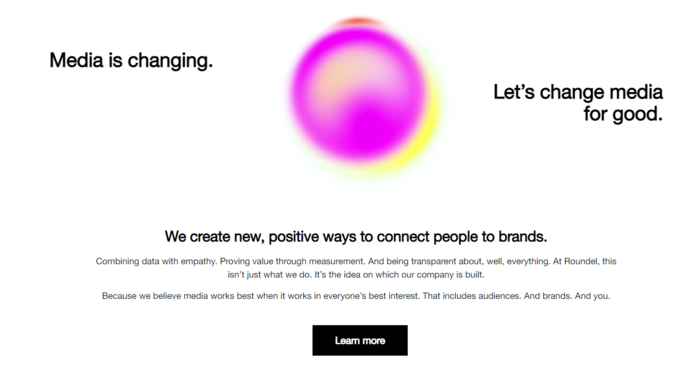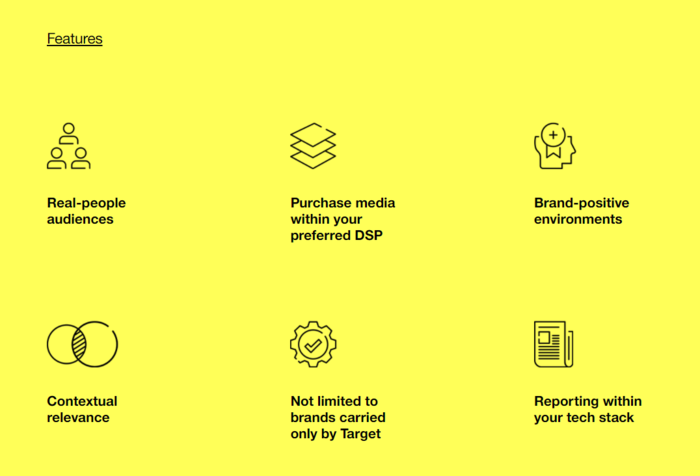
How to Advertise Your Products on Target.com
If you woke up with a $250K ad budget tomorrow, how would you spend it?
Some e-commerce sellers would buy first-page ads on Google for a year; others might see if they could run a commercial after the Super Bowl. Maybe hire a few hundred influencers to promote your business? One or two sellers would think of crazy publicity stunts to create hype for their products.
However, at a certain point, your e-commerce business will need to scale up. Part of running a successful business is keeping an eye on your next steps. With that said, e-commerce sellers looking to grow need to understand what a $250K ad budget gets you and how to make the most of it.
That’s why we’re going to unpack Target Roundel, a powerful, complex retail media network with quite a few tricks up its Target advertising sleeve.
What Is Target Roundel?
Target defines Target Roundel as its internal retail media network. Of course, if you aren’t familiar with the concept of retail media, that definition doesn’t offer much clarity.

Retail media refers to a specific kind of advertising where ads are presented within a particular retail site or app. At first glance, that might not sound particularly exciting. After all, plenty of advertising platforms help promote products to potential customers. What’s so special about retail sites?
To answer that question, it’s important to understand that retail media networks like Target Roundel offer e-commerce sellers an increased digital presence and unique advertising tactics that go far beyond your typical banner ad.
Why You Should Use Target Advertising/Roundel
As an e-commerce seller, the more control you have over your advertising, the easier it becomes to pinpoint specific buyers and niches. This is part of what makes a retail media network like Target Roundel so appealing.
By using Target advertising, you’re doing more than just leveraging the reputation of a trusted retail space. You’re maximizing the visibility of your e-commerce products to specific shoppers. Target Roundel is particularly appealing to e-commerce sellers looking for a variety of well-integrated retail media targeting options.
Major brands like Coca-Cola and Disney are already using this retail media network as part of their audience targeting strategies, and it’s easy to see why.
To enhance a marketing strategy, audience targeting has become a must-have tool in every marketer’s arsenal. Without some form of audience targeting, marketers can’t control and test every element of their strategy.
What Makes Roundel’s Target Advertising Different From Other Platforms?
Now that we understand what retail media networks are and what makes them so appealing to e-commerce sellers, it’s time to move on to Target itself and determine what makes its retail media network valuable. Target Roundel focuses on several key areas to maximize value to e-commerce sellers.
Target’s first-party data combines the transactional and behavioral data of over 30 million weekly in-store and online purchases. Target advertising creates audiences by reviewing unique guest profiles and measuring buyer metrics within a unified database.
The concept of closed-loop measurement revolves around connecting ad usage to actual conversions. Target Roundel built its media solutions with transparency in mind, monitoring these measurements to determine a seller’s highest performing ad, network, and channel.
E-commerce sellers need tools that help them calculate how effective the previous month’s marketing campaign was. Quickly being able to calculate return on ad spend (ROAS) makes justifying a budget based on measurable results significantly easier.
This concept of end-to-end campaign transparency extends beyond marketing metrics. By only placing your brand in positive, relevant environments, Target advertising can ensure your content is never associated with negative, inappropriate content.
In fact, Target Roundel is so committed to this idea that it only promotes seller ads in places where Target would run its own advertising!
How to Use Target Advertising Ad Types
Target offers various placement and targeting options, but there are five major ad types that e-commerce sellers should be familiar with: Target’s proprietary Programmatic ads, Target product ads, search ads, social ads, and display ads.
By incorporating display, audio, and video channels, Target Roundel can easily and consistently connect e-commerce products with the appropriate audience.
Target Advertising Ad Type 1: Programmatic by Roundel
An ad type that’s exclusive to Target advertising, programmatic media takes Target’s first-party data and turns it into an actionable marketing strategy.
To fully understand this ad type, we have to understand how publishers and media buyers interact. Basically, publishers make certain media inventory available via ad exchanges. Media buyers use tools called demand-side platforms (DSPs) to purchase media.

Target’s programmatic advertising allows for an automated approach to buying, selling, and fulfilling digital ads. This advertising tool lets media buyers use their existing DSPs to gain access to Target’s customized audience segments. In other words, e-commerce sellers can easily target “men’s apparel purchasers.”
Of course, this programmatic tool does more than just offer access to customized audience segments. Target Roundel also helps sellers reach engaged shoppers at any point on their buyer’s journey.
Sellers can offer a cheaper alternative as shoppers begin their buyer’s journey or present a superior choice as shoppers approach the end of their journey.
With clear metrics, contextual relevance, and plenty of customization available, sellers can systematically determine the most effective approach for each product.
Target Advertising Ad Type 2: Search Ads (Target Product Ads by Target Roundel)
Target product ads are designed to boost product sales using native, cost-per-click (CPC) ads on both Target.com and the Target app.
Target Roundel’s strategy with this ad type is relatively straightforward. First, there’s a focus on driving incremental sales by bidding against high-performing products. Sellers can then reinvest in winning strategies with up-to-date reporting and sales attribution. From there, sellers can activate their campaigns via Target’s preferred partners.
What does this process look like? Well, sellers start by deciding their investment level. At that point, you’ll select which products you’d like to promote and organize them into campaigns.
The ads are then live on Target.com within a day or two, and sellers can make placement optimizations in real time. Target’s preferred partners help you automate and analyze your campaigns, whether you’re looking for self-service or managed service.
As far as placement goes, these ads can appear on product detail pages, dynamic landing pages, search pages, and much more on Target.com. Target product ads are perfect for reaching interested shoppers actively searching for products.
Target Advertising Ad Type 3: Search Ads (Search Ads by Target Roundel)
If Target product ads are for shoppers already engaging with Target.com, Roundel’s search ads focus on turning active interest on search engines like Google into conversions on Target.com.
Essentially, there are two Target search ad methods that sellers can use. Both are designed to leverage Target assets and first-party data for rapid activation, whether involving product listing ads or extended text ads.
Here are the two approaches:
- In-flight approach: This first method is where sellers incorporate search tactics into their marketing campaigns, reaching shoppers at all marketing touchpoints during seasonal and high-opportunity time frames. This approach is designed for seasonal sellers who have specific marketing focal points.
- Always-on approach: This method is what most sellers may need to consider moving forward. The always-on approach lets sellers run search campaigns as stand-alone, dedicated campaigns. Why does this matter? If you’re trying to consistently improve your marketing efforts, you need to collect as much relevant data as possible. The always-on approach helps sellers capture that qualified data all year long.
Target’s system for providing end-to-end transparency starts by detailing the journey of a potential search-driven shopper. Target guests begin by clicking on the Roundel campaign ad from a search engine.
The Target shopper is then identified, and transactions are made via in-store or online purchase. Sellers will then receive detailed revenue breakdowns for products sold under their brand, all in real time. This lets sellers leverage their insights and further optimize their marketing campaigns.
Target Advertising Ad Type 4: Social Ads by Target Roundel
Roundel’s social offerings are part of its mission to connect Target guests with brands they can trust. Social ads by Roundel aim to help companies increase brand exposure.

As an e-commerce seller, working with Roundel means that you can leverage Target’s brand across platforms like Facebook, Pinterest, and Snapchat. Beyond that, you’ll be able to directly engage with Target’s first-party shoppers.
You can launch your campaign with static, animated, or video ad placements across a variety of social platforms. Use branded Facebook videos, Snap Ads, and Pinterest Pins, all while co-marketing with Target.
Part of what makes this so compelling is being able to legitimize your brand by association with Target. That being said, the targeting potential shouldn’t be overlooked. Target’s unique audience segments are up-to-date and detailed, which makes them extremely valuable to e-commerce sellers.
Target Advertising Ad Type 5: Display Ads by Target Roundel
Target Roundel offers display ads to keep seller’s products visible and accessible, both on and off Target.com.
By relying on relevant messages delivered at exactly the right moment, Target advertising aims to create meaningful connections between shoppers and sellers. According to Target, the display ad approach comes at scale, with detailed measurements for products sold.

It’s worth noting that end-to-end transparency, Target’s commitment to sellers, is about more than just data and measurement. As a seller, you can engage with Target Roundel to whatever degree your brand needs.
If you’re interested in a managed service, you can expect Roundel to manage every aspect of your media buys, from pre-sale to measurement. For sellers that don’t mind getting their hands dirty, there’s self-service.
These sellers can purchase display ads programmatically and start leveraging their existing measurement solutions through the DSP of their choice.
Conclusion
Whether you’re a local business or a Fortune 500 company, finding the right platform for your brand can dramatically elevate the quality of your marketing campaigns.
E-commerce sellers looking to leverage the power of retail media networks understand that real-time access to first-party data is a valuable sales and growth marketing tool.
Target Roundel uses programmatic ads to automate the buying and selling of ads, making media buys that much easier. To boost product sales, Target product ads rely on native CPC ads.
Target search ads drive interested buyers to seller products, and Target’s social ads help sellers connect with interested shoppers on a deeper level. Its display ads help keep seller’s products visible to shoppers, both on and off Target.com.
With digital ad solutions that cover multiple angles, Target Roundel certainly makes an interesting case for e-commerce sellers looking to scale up their Target advertising campaigns in a major way.
Have you used Target advertising to boost sales for your brand? What was your experience?






